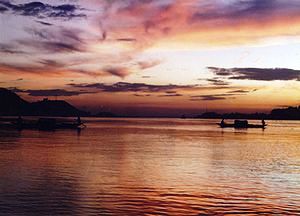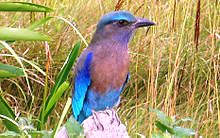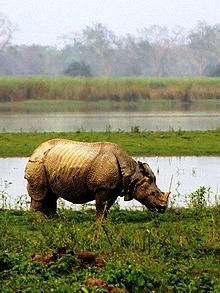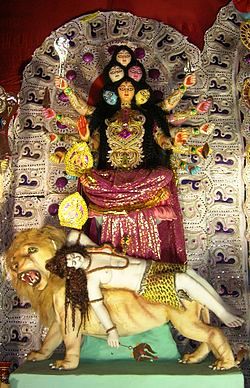My visit to Assam
I have been visiting to Assam for years for different reasons and whenever I got an opportunity to do so I found myself thrilled with a different kind of feeling. This feeling was always different from the feeling of just another trip to a beautiful state but it probably had the mixture of anxieties with the mysteries hidden deep in subconscious, which are associated with northeastern parts of our country. This feeling took me over invariably, whenever I visited Assam, Nagaland, Meghalaya, Arunachal or any other states of the 7 states of this area. However, mystified or excited I never missed a chance even while I was there in that area to go for sightseeing a pace of interest for outsiders as well as locals. This area is not open for foreigners unless taken special permission from government of India also very few Indians visit these areas beyond Sikkim, Darjiling, etc because our tourist departments are not taking enough interest to promote this area for various reasons. I would describe some of my own experiences here for the benefit of readers who finding the area interesting might make a visit plan. Therefore I was more than pleased when my brother asked me to accompany to Guwahati for a deal of tea for his planned plant of packed tea he wanted to add to his business. We took the opportunity to take a cruise program to visit famous places of Assam through waterways in place of traditional roads or trains. Here is the detailed description of our journey-
Day one of seven
 I would prefer to write this particular article in first person as the destination known ‘northeast’ is close to my heart, where I have visited for multiple times during my pre-job, job and after job. Although I have visited the whole region of seven sister states as the northeast is popularly described but I shall keep this particular chapter to my visit consisting of seven days that I spent here along with my brother a couple of years before. This trip was by a famous and only ship company that organizes trips to travel within Assam according to budget and time available for different travelers’ choice. The cruse service operates in River Brahmputra from Guwahati to different destinations covering the main tourist spots. These trips start on certain dates for four, seven or ten day’s duration. The charges for the trip also depend on the class of your preference/facilities you are willing to take and duration. The fair plans vary according to number of days, cities covered and cabin facilities from INR 10,000 to INR20, 000, which are inclusive of meals, cabin, pickup from airport, camping and sightseeing etc.
I would prefer to write this particular article in first person as the destination known ‘northeast’ is close to my heart, where I have visited for multiple times during my pre-job, job and after job. Although I have visited the whole region of seven sister states as the northeast is popularly described but I shall keep this particular chapter to my visit consisting of seven days that I spent here along with my brother a couple of years before. This trip was by a famous and only ship company that organizes trips to travel within Assam according to budget and time available for different travelers’ choice. The cruse service operates in River Brahmputra from Guwahati to different destinations covering the main tourist spots. These trips start on certain dates for four, seven or ten day’s duration. The charges for the trip also depend on the class of your preference/facilities you are willing to take and duration. The fair plans vary according to number of days, cities covered and cabin facilities from INR 10,000 to INR20, 000, which are inclusive of meals, cabin, pickup from airport, camping and sightseeing etc.
My brother and I started from Delhi by a private airline, which has since been taken over by another airline that took almost three hours of flying time to reach to Guwahati where the cruise service had arrangements to pickup travelers to ships, in fact kind of luxury steamers with all facilities available. We took a tourist plan for seven days to see different tourist spots although I had been to some of these places before also. The journey had begun after we spent a few hours in the city for a local visit to a destination, I shall describe in the end. I preferred to sit on the deck in place of taking a much needed rest after traveling so much from my town to Delhi and then to Guwahati, local destination and shopping a bit then on to ship. I was not alone on the deck but a few others too were here although my brother had decided to take a nap.
Brahmaputra is a big river and that was visible by seeing the breadth of the river, not less than 20- 25 km or so in between the banks where we were traveling that almost like a small sea in place of a river.
The sun was about to set as our ship was traveling against the stream toward Tejpur known as Sonitpur formerly. The travelers present at the deck were ready to capture the sunset and the lovely view on show in their cameras. Every one was busy with keeping memories safe forever, so was me but I would call it my bad luck that I have no memories in form of photographs left from that particular trip because those were lost while my laptop that consisted them was stolen. We had our evening breakfast there on the deck itself although they had a compact and well-furnished dining room to cater to dining facilities but no one wanted to leave the deck. You must be well aware that sun sets too early in East so it was time to retire as the evening spread its wings and sounds from river water and speed of breeze increased. So after an early dinner we tried to catch some sleep to have some rest after a hectic day. Although, I am used to sleep in different atmospheres and conditions including ships at sea but that was a different experience due to size of the steamer and shakiness of the journey but managed to sleep in the end.
Day two of seven
I woke up next morning with a feeling of some thing touching me softly and kissing me on my forehead and I was surprised to note that it was sun coming out of the river in its full glamour a big round shaped red ball. That was some thing out of the world, which made me feel about what we were missing due to over busy lifestyle in fact we were getting away from the nature, which remains present but we fail to notice it because we have no time or too busy looking in other directions. I woke my brother up and came to deck to see the splendor of beauty scattered all around. Hazy view of hillocks behind the cover of fog on both banks of the river with glimpses of green appeared as if I was looking at a heavenly landscape. I just do not have matching words to describe that scene which was almost out of the world.
We finished our daily routine and breakfast because we were scheduled to stop at a village at 10am for a local cultural program and lunch with villagers in traditional style. Our ship stopped dot at 10 at northern shore of Brahmaputra and walked on narrow trails in between corn plants that were a real fun in itself, as we do not get time to visit villages any more to have this experience. Some of the foreign tourists who were along had never seen such narrow routs before in their life and were thrilled to core. We had our lunch although I had to limit my meals to few vegetarian dishes and fruits because most of the dishes were fish preparations which I had stopped eating a couple of years before as a rule. However my brother enjoyed the dishes along with 18 other passengers who were part of our group. We spent the evening with lots of activities like dancing and music and eating different items. We took leave of villagers giving them some cash as mark of our gratitude for the time and fun they shared with us and got back to safety of our cabins as ship started to move toward Tejpur.
Day three of seven
We were at Tejpur next day, one of the most peaceful and famous cities of Assam also known as city of gardens, temples and historical buildings. The city is located at the footsteps of hills of Agnigarh where as per the saying goes, Usha the daughter of Raja Ban and Aniruddha the grand son of Lord Krishna used to wander with each other. However, there perhaps float tons of sayings around this mysterious area but the view from top of hills of Agnigarh offers great show for tourists who find so many unique items on view. A beautiful waterfall here adds splendor to the area’s beauty even more.
Later we were taken to an island that has a wonderful lake, a lovely park with musical fountain. The Island named Padam Pukhuri that means ‘Lotus leaf’ in English can easily be reached through a bridge especially built to reach there or by boat as per the desires of tourists. Next we were taken to The Hazara Pukhuri- the water tank built in 9th century named after Harzan Burman. We then reached to Mahabhairav temple constructed by King Ban dedicated to lord Shiva where Shivaratri is celebrated with much fanfare. This was our last program for the day and as we had the arrangements to sleep in tents that night therefore after finishing dinner we went to sleep and we really slept well as we were too tired after a hectic day’s activities.
Day four of seven

We started for Nameri national park by jeeps, the park reserved for elephants that houses number of animals including tigers, lions, leopards, deer, jungle dogs, gaur, wild boars sloth bear, Black Himalayan bear, big squirrel, Langur (big-tailed monkey with black mouth) and many more species of animals and birds. Nameri is one of best places for bird watchers who can find up to three hundred different birds including duck with white feathers, great Indian hornbill, wreathed hornbill, Rufous hornbill, Black cranes, Babbler, Plover and many other rare species found here in this park. It was another day with wonderful experience of different places and most of our time spent watching shrubs of botanical values, birds and animals. We saw different plantations of canes, bamboos etc before coming back to our ship to finally retire for the day after having our dinner.
Day five of seven
 We were still heading toward north and the River Brahmaputra looked still wider and more mysterious as fog was blocking the view of banks on either sides. However we were ready to get down of our ship just after crossing a bridge. We had to walk a little distance where a few jeeps were waiting for us to take us to one of the most famous of national parks the Kaziranga. Finally we were on our way to Kaziranga national park to see one horned rhino. Although, this was my second trip to the park, the first one was way back while I was still a student. And there were two other visitors to accompany me on an elephant for the trip. One of them a Spanish girl who could not speak English properly and the other one an army officer Sardar who was more interested in the girl rather than all the rhinos and wild buffalos. Let me come back to present tour, which I was enjoying with my brother and 18 other co-travelers.
We were still heading toward north and the River Brahmaputra looked still wider and more mysterious as fog was blocking the view of banks on either sides. However we were ready to get down of our ship just after crossing a bridge. We had to walk a little distance where a few jeeps were waiting for us to take us to one of the most famous of national parks the Kaziranga. Finally we were on our way to Kaziranga national park to see one horned rhino. Although, this was my second trip to the park, the first one was way back while I was still a student. And there were two other visitors to accompany me on an elephant for the trip. One of them a Spanish girl who could not speak English properly and the other one an army officer Sardar who was more interested in the girl rather than all the rhinos and wild buffalos. Let me come back to present tour, which I was enjoying with my brother and 18 other co-travelers.
Kaziranga is one of the oldest parks of India that was declared a reserve forest in the beginning of 20th century itself and a wild life sanctuary in 1950. UNESCO included this prestigious park as world heritage site in 1985. Kaziranga situated at the western bank of Brahmaputra right at the footsteps of Mikir hills that is part of Karbi Anaglong Plateau, where most number of elephants and rhinos are found in the world. Kaziranga national park spread over 450 sq km in the middle of Assam is most famous for single horned rhinos also the place has no human habitat having elephant grass, too thickly populated with dangerous animals.
The water ponds and sources, wetlands etc host a big number of migrant birds to this area from distant places like Siberia who fly to this area to survive the cold winters there. One can see more than one hundred species of migrated birds from different parts of the world here, as the water sources are full of fishes and plenty of grass that becomes source of different insects for guest birds. There is another place near village Kaziranga where they breed gyrfalcon, besides the migrant birds like Bengal Florican also known as Bengal Bustards, black-necked stork, Pallas’s fish eagle, Grey headed fish eagle, Green imperial pigeon, Great paid hornbill, silver breasted broadbill and snakes like water man-eater, Indian python, common cobra and king cobra are commonly found in Kaziranga.
Kaziranga has lot of area with no hard surface, swamp or wetlands and water tanks therefore ideal for many species of mammals like lions, elephants, big buffalos, leopards, jackals, foxes, wild cats and blue blooded like cobra and hundreds of species of birds including cranes, hornbills, ducks, Pelicans, eagles and many more in very big quantities. There is a strange fact that most animals move toward Mikir hills or still ahead to save them from floods, a regular feature every year as river Brahmaputra over flows every year in rainy season. We spent the day on elephants trying to find some big animals but that was not to be and despite best efforts of our mahouts we managed to see only few wild buffalos, couple of big monkeys and birds although, we saw a fighting rhino with a wild buffalo at a far off distance. We came back to our guesthouse where we had to stay overnight. We had a nice dinner and went to sleep to getup early in the morning.
Day six of seven
We started early in the morning to try our luck once again on back of elephants but failed again as after spending another two hours we managed a bear family that too fled away watching us approaching. We did not have much time as we were scheduled to visit a tea plantation so we came back to start for our new destination. The visit to tea gardens was an altogether new experience for us and more so for my brother who was here for tea trading so he wanted to learn every thing about tea. And as he was interested to know from plantation to manufacturing we two left others behind to have some deeper knowledge about tea entered in a nearby tea unit. We came to know about different aspects about tea manufacturing and plantation there as the owner of the plant himself was there a perfect gentleman from Rajasthan originally who deputed one senior person to tell us about tea, plantation and manufacturing and also invited us to his Guwahati office where he was scheduled to reach the same day.
Mr. Gogoi the person who was guiding us told that almost 2,70,000 hectare of land in Assam is used for tea plantation where they produce 4,50,000 tones of tea annually and that makes India among top tea producing countries in the world. While walking in the tea garden we saw workers plucking the tea leaves with such a fast pace and putting them in the basket tied on their heads. Mr. Gogoi told us that the quality of the tea depends on the way it is plucked and the standard way is to pluck two leaves and one bud together, at one time. Every expert person, mostly women could pluck 25-30 Kg each a day. He told us once the leaves plucked are kept to dry in a case where the hot and cold air passed systematically to take most of the moisture out of the leaves. The drying process goes on for almost 10-12 hours
Once the process of drying completed they passed them through another roller typed machine to extract all juice of the leaves out. Later they showed us the CTC machine that stands for cutting, tearing and curling. The machine has teeth those run in opposite directions through stainless steel rollers. Finally the leaves pass through a machine called Googy process where the leaves pass through big aluminum drums to take round shape. The leaves then placed in fermentation tray sized 4x10ft where they set them 3 inches thick. The oxygen present in atmosphere helps change the color of the leaves also the smell begins to differ. That change of smell indicates the time to dry the tea through heaters blowing hot air onto a mashed stainless steel conveyer belt. The tea passes through fluid bed drawer for 16 minutes to be precise before putting into bromate machine where the extra elements from the tea sorted out also the dust and leaves put apart. Finally the leaves sorted according to requirement through wire mesh. That was wonderful experience that we had for almost two and a half hours learning every thing about tea processing. During the process of tea manufacturing they offered us tea of different varieties, which their tea tasters were tasting constantly. They told us the process of tea tasting and changing quality through mixing different teas together.
That was it, as we started back for our steamer where we had a late lunch. After the lunch we were offered the choice in between a boat ride or a visit to the nearby village with locals to know them better through their dance and music. I went to the second option with my brother along with seven other tourists, while six stayed back at ship, five went for boating. We had lots of fun dancing and singing with villagers and to be frank here we tasted their homemade rice wine, which was not strong but too sour and bitter to my taste. The journey was over next morning after the breakfast where taxis were waiting for us to leave us at Guwahati, Tejpur or Jorhat as per choice of the passengers. Since we had our return journey from Guwahati the next noon we took leave of fellow passengers and captain of the ship to move to Guwahati. It took us almost 4 hours to reach Paltan bazaar Guwahati, where we found a good hotel and started for Kamakhya Devi temple by an auto rikshaw. Now the most exciting experience of our life that we had after we reached to Guwahati-
Kamakhya Temple, Guwahati
 The World famous sacred temple of Kamakhya considered ‘Tantra Pith’ is located at top of Kamagiri hills about three km from main city of Guwahati where devotees of Goddess Kamakhya from different places prefer to walk the distance on feet up to the hill although city bus service services, private taxis are also available. The temple of Kamakhya has many old stories relating this ‘pith of power’ as one of the most powerful among the 51 ‘power piths’ situated in India. As per old belief the private parts of Goddess were fallen on Nilanchal hill after Vishnu used his Chakra. The devotees worship the parts with all rituals and doors are closed for those ‘three days’ every month, even entrance and worshipping kept suspended to keep the privacy. Photography and entrance is strictly prohibited inside that particular area of temple. Fourth day when the Goddess is considered pure as in the case of women in our country, the doors of the temple opened for devotees after special bath and worshipping rituals completed by Brahmins of the temple.
The World famous sacred temple of Kamakhya considered ‘Tantra Pith’ is located at top of Kamagiri hills about three km from main city of Guwahati where devotees of Goddess Kamakhya from different places prefer to walk the distance on feet up to the hill although city bus service services, private taxis are also available. The temple of Kamakhya has many old stories relating this ‘pith of power’ as one of the most powerful among the 51 ‘power piths’ situated in India. As per old belief the private parts of Goddess were fallen on Nilanchal hill after Vishnu used his Chakra. The devotees worship the parts with all rituals and doors are closed for those ‘three days’ every month, even entrance and worshipping kept suspended to keep the privacy. Photography and entrance is strictly prohibited inside that particular area of temple. Fourth day when the Goddess is considered pure as in the case of women in our country, the doors of the temple opened for devotees after special bath and worshipping rituals completed by Brahmins of the temple.
There are different monetary classifications for entry to take Darshan of Goddess Kamakhya, where it takes a long time to reach and once you are in there it’s just a tiny earthen lamp lit light that makes it difficult to see any thing properly. A hoard of priests along with their clients who offered ‘Bali’ of goats and buffalos by beheading these cattle in open view who accompany their clients to help them in the main temple to complete worship rituals. The heads is offered to these priests as fee along with money and the rest of the meat of the cattle as Prasad by the client to be distributed among family and friends. The temple also offers Prasad of meat and rice to its devotees, which is accepted with much devotion. People who donate to the temple trust are given a receipt and piece of red cloth as symbol of Prasad of the temple.
Day seven of seven
Had a wonderful breakfast at 9AM, a brief lunch at Guwahati airport at 1PM and left for Delhi at 3 PM
All photos from wikipedia